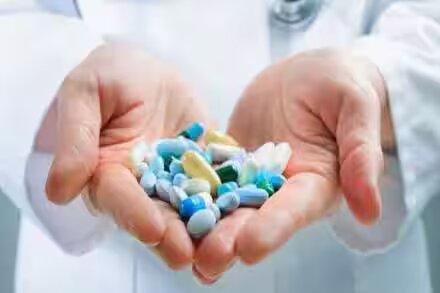Introduction
Life-saving drugs have revolutionized modern medicine, providing a beacon of hope for patients suffering from life-threatening diseases. These medications, designed to treat severe conditions like cancer, HIV/AIDS, cardiovascular diseases, and more, have significantly improved survival rates and quality of life. In this article, we delve into the world of life-saving drugs, exploring their development, impact, and the critical role they play in healthcare.
The Development of Life-Saving Drugs
The journey from discovery to the market for life-saving drugs is a complex and rigorous process. It involves several stages:
-
Discovery and Research: The first step in developing a life-saving drug is the discovery phase, where researchers identify potential compounds that could treat a specific disease. This involves extensive laboratory research, screening thousands of compounds, and understanding the disease's biology. The manufacturer of cyclophosphamide, an essential chemotherapy drug, plays a critical role in ensuring its availability for cancer treatment worldwide.
-
Preclinical Testing: Once a promising compound is identified, it undergoes preclinical testing. This involves laboratory and animal studies to evaluate the drug's safety and efficacy. Researchers look for any adverse effects and determine the appropriate dosage.
-
Clinical Trials: If preclinical testing is successful, the drug enters clinical trials. These are conducted in multiple phases:
- Phase I: Tests the drug's safety in a small group of healthy volunteers or patients.
- Phase II: Expands the study to a larger group to evaluate the drug's efficacy and side effects.
- Phase III: Involves a large-scale study to confirm the drug's effectiveness, monitor side effects, and compare it with standard treatments.
-
Regulatory Approval: After successful clinical trials, the drug manufacturer submits a New Drug Application (NDA) to regulatory bodies like the FDA (Food and Drug Administration) or EMA (European Medicines Agency). These agencies review the data and approve the drug if it meets all safety and efficacy criteria.
-
Post-Marketing Surveillance: Even after approval, the drug undergoes continuous monitoring to track its performance in the general population and identify any long-term side effects.
The Impact of Life-Saving Drugs
Life-saving drugs have had a profound impact on global health, transforming once-fatal diseases into manageable conditions. Here are a few examples:
-
Cancer: Advances in chemotherapy, targeted therapy, and immunotherapy have drastically improved cancer survival rates. Drugs like imatinib (Gleevec) for chronic myeloid leukemia and pembrolizumab (Keytruda) for various cancers have changed the prognosis for many patients.
-
HIV/AIDS: The introduction of antiretroviral therapy (ART) has turned HIV/AIDS from a death sentence into a chronic, manageable disease. Medications like zidovudine (AZT) and newer combinations have significantly reduced HIV-related mortality and improved the quality of life for millions.
-
Cardiovascular Diseases: Drugs like statins for lowering cholesterol, beta-blockers for heart disease, and thrombolytics for treating strokes have saved countless lives by preventing and managing cardiovascular conditions.
-
Infectious Diseases: Antibiotics, antivirals, and antifungals have revolutionized the treatment of infectious diseases. Drugs like penicillin, oseltamivir (Tamiflu), and amphotericin B have been crucial in fighting bacterial, viral, and fungal infections, respectively.
-
Chronic Diseases: Medications for diabetes, hypertension, and asthma have transformed these chronic diseases into manageable conditions. Insulin for diabetes and inhalers for asthma are prime examples of life-saving drugs that have enhanced the quality of life for patients.
Read more: Specialitymedz
Challenges in Developing Life-Saving Drugs
While life-saving drugs have made significant strides, developing these medications is fraught with challenges:
-
High Costs: The cost of drug development is astronomical, often exceeding billions of dollars. This includes research, clinical trials, regulatory approval, and post-marketing surveillance.
-
Long Development Time: The entire process from discovery to market can take over a decade. This long timeline is necessary to ensure the drug's safety and efficacy but can delay access to critical treatments.
-
Regulatory Hurdles: Regulatory requirements are stringent to ensure patient safety. However, navigating these regulations can be complex and time-consuming for pharmaceutical companies.
-
Drug Resistance: In the case of infectious diseases and cancer, drug resistance is a significant challenge. Pathogens and cancer cells can mutate, rendering treatments less effective or even obsolete.
-
Access and Affordability: Even after approval, access to life-saving drugs can be limited by high prices and availability, particularly in low- and middle-income countries. Ensuring equitable access remains a pressing issue.
The Future of Life-Saving Drugs
The future of life-saving drugs is promising, with advancements in technology and science paving the way for new therapies. Here are a few trends to watch:
-
Precision Medicine: Personalized treatments based on an individual's genetic makeup are becoming more prevalent. This approach ensures that patients receive the most effective therapies with minimal side effects.
-
Gene Therapy: Gene therapy holds the potential to cure genetic disorders by correcting defective genes. Recent approvals of gene therapies for conditions like spinal muscular atrophy and certain types of blindness are promising.
-
Immunotherapy: Leveraging the body's immune system to fight diseases, particularly cancer, has shown remarkable success. CAR-T cell therapy and checkpoint inhibitors are at the forefront of this revolution.
-
Artificial Intelligence: AI and machine learning are accelerating drug discovery and development by analyzing vast amounts of data and predicting potential drug candidates more efficiently.
-
Global Collaboration: The COVID-19 pandemic has highlighted the importance of global collaboration in drug development. Partnerships between governments, pharmaceutical companies, and research institutions are crucial for tackling future health crises.
Conclusion
Life-saving drugs have transformed healthcare, offering hope and improved outcomes for patients with life-threatening conditions. The journey of these drugs, from discovery to market, is a testament to human ingenuity and perseverance. While challenges remain, the future holds great promise, with advancements in precision medicine, gene therapy, immunotherapy, and AI set to revolutionize the field further. Ensuring access and affordability of these critical medications will be key to maximizing their impact and improving global health outcomes.
